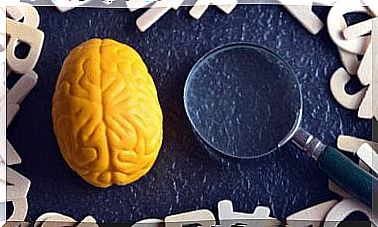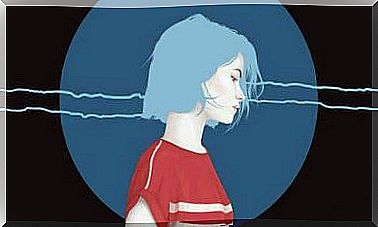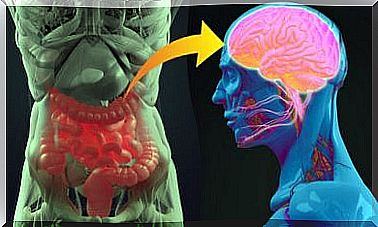Theories About Hunger: Why Do We Eat?

There are various theories about hunger. Maybe you have experienced this scenario. It’s dinner and you’re hungry. You get even hungrier with each passing minute. You just have to eat now! However, you are very busy, so you can not. Now it’s four in the afternoon and you’re not hungry anymore.
How many times have you heard people say “I’m not hungry anymore” ? There are many theories about hunger that give us different answers to the question: Why do we eat?
The answer may seem simple: Because you are hungry. But is it really that easy? Partly yes, but why does hunger go away so many times? When you get your favorite, why do you eat so much more than you really need? “I’m not hungry anymore, but I love it.” And with one, you eat until you are stuffed.
In this article, we will present the most popular theories about hunger, which accurately explain our eating behavior and provide an answer to the aforementioned questions.
The set-point theory is one of the most well-known theories about hunger
The set-point theory explains hunger with a lack of energy. When you eat, you regain your optimal energy level. It is known as an energy adaptation point.
According to this theory, a person eats until they feel full. At that point, they stop eating because they have restored their “set-point”. Thus, dining has fulfilled its purpose. As a result, the person will not eat again until the body has used enough energy to get below the set point again.
The set-point systems consist of three components:
- Adjustment mechanism: Establishes set-points.
- Detector mechanism: Identifies deviation from set-point.
- Mechanism of action: Eliminates deviations.

All of these set-point systems (Wenning, 1999) are negative feedback systems. In other words, the feedback that comes from changes in a certain direction produces compensatory effects in an opposite direction. We can often find these systems in mammals and their purpose is to maintain homeostasis.
If this theory were 100% correct, you would stop eating as soon as you reached your set point. But that’s not always the case, is it?
Glucostatic set-point theory
In the mid-20th century, several researchers believed that humans ate to maintain blood sugar levels. It is the glucostatic set-point theory. In other words, you eat when your blood glucose level drops and you stop eating when it is normal again.
Lipostatic set-point theory
According to this theory , every person has an adaptation point for body fat. Therefore, people eat to restore this level.
Limitations of the set-point theories
The first limitation of these theories is that they do not include the influence of taste, upbringing, and social factors.
This applies to your favorite and social gatherings. Imagine for a second you were transposed into the karmic driven world of Earl. You probably will not eat very much of the food you do not like.
On the other hand, you will probably eat quite a lot of the food you like, even more than what you need. In other words, it is possible to eat even when you are not hungry.
Lowe (1993) has said that more than 50% of all Americans have a significant excess in fat stores when they start eating. This also applies to people who have a surplus in the fat depots and who continue to eat. This also helps to reject the set-point theories.
If these theories were correct, man would not exist today. Pinel, Assanand, and Lehman (2000) state that “Set-point theories of hunger and eating are illogical in relation to common evolutionary pressures related to hunger and eating, as they are currently understood.”
The authors explained that our ancestors needed a lot of food in case they could not find anything later. Therefore, they would store calories in the form of fat. If the set-point theory were correct, they would have stopped eating as soon as the deviations were eliminated. But if they had nothing to eat, they would not have any calorie reserves.

A positive-encouraging perspective
According to the positive-stimulating theory, humans and other animals are not motivated to eat due to lack of energy, but they are instead motivated by the expected joy of eating – the positive-stimulating value (Booth, 1981).
This theory assumes that hunger stems from the historical pressure we have suffered from the lack of food. So instead of lack of energy, what is causing hunger is the presence of appetizing food or just the thought of it.
Your hunger depends on the interaction of various factors:
- Taste.
- What you have learned about the effects of food.
- The time that has passed since you last ate.
- The amount and type of food you are digesting right now.
- Whether there are other people present or whether you are alone.
- Blood sugar level.
Theories of Hunger: Not everything is as it seems
In this overview of the primary theories of hunger, we have seen that the answer to why we eat is not always so easy. Something as common as eating is not so easy to explain. This is because we not only eat when we are hungry, but also because we like some food.
On the other hand, Jaime Silva (2007) emphasizes that emotions and moods also affect food intake. Silva says that “on the one hand, emotional state and mood can affect eating habits. On the other hand, food can affect emotions and moods. ”
How many times have you eaten more than necessary to ease your worries? Or how many times have you stopped eating because of them? Hunger must no doubt be investigated further.









